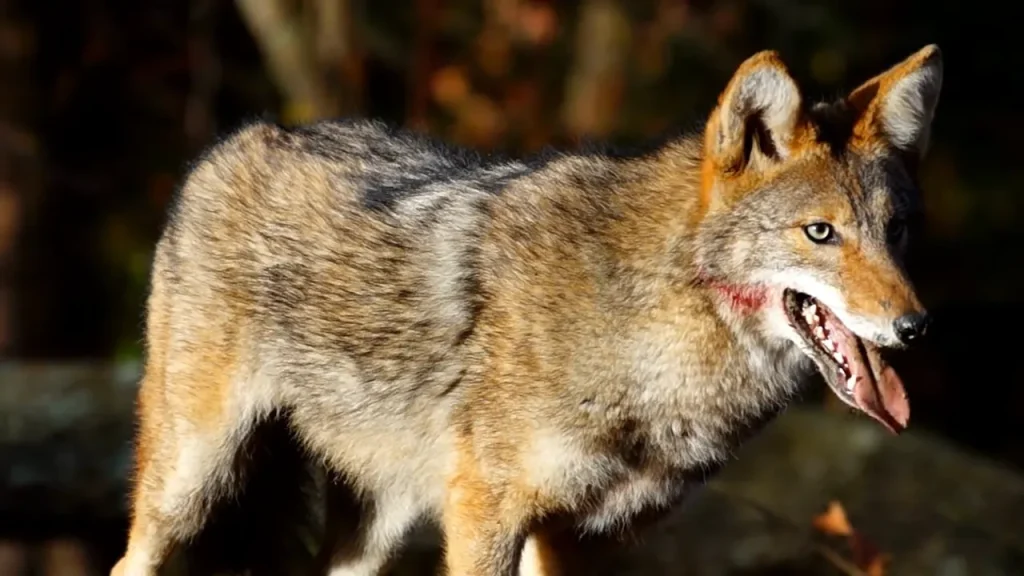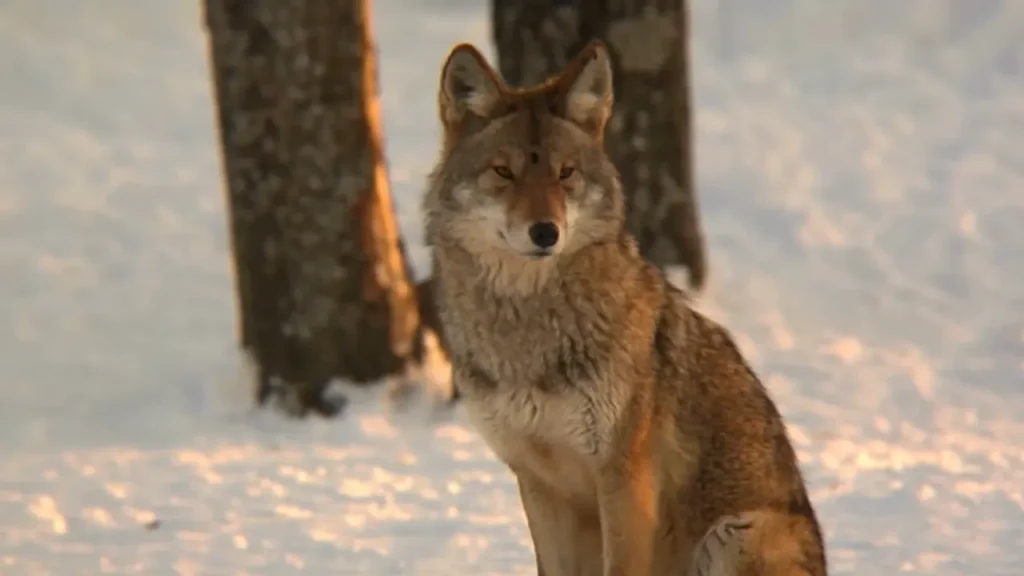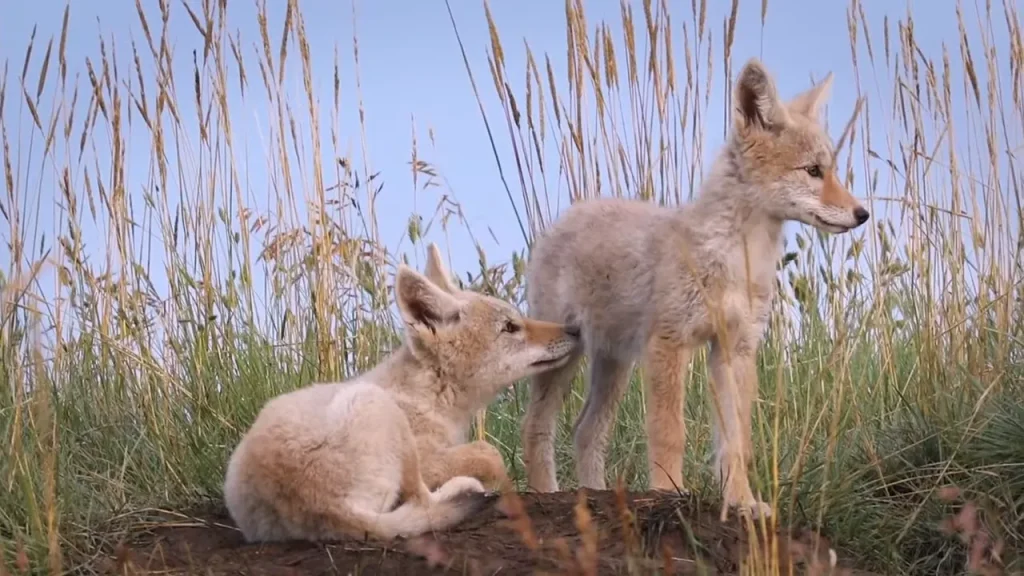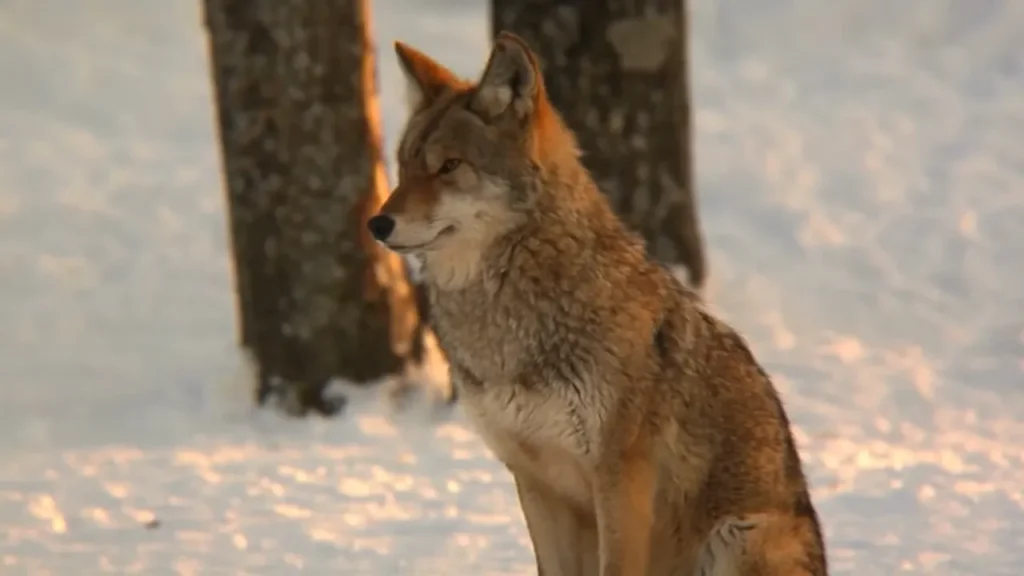Are There Coyotes in Zion National Park?

Yes, coyotes are present in Zion National Park and play a vital role in its ecosystem. These adaptable predators are well-suited to the park’s diverse habitats, from its desert landscapes to wooded areas. While sightings may be rare, coyotes are an integral part of the park’s wildlife.
Table of Contents
What Do Coyotes Look Like?

Coyotes are medium-sized canines with unique features that help distinguish them from domestic dogs or other wildlife.
- Physical Appearance: They have grayish-brown fur with reddish tones, a bushy tail, and sharp, upright ears.
- Tracks: Narrow, oval-shaped prints that are smaller and more compact than those of domestic dogs.
- Sounds: Their iconic howls, yips, and barks are often heard at night, echoing through Zion’s canyons.
Their appearance helps them blend into Zion’s natural environment, making them hard to spot.
Where Can Coyotes Be Found in Zion?
Coyotes are highly adaptable and can thrive in various environments within Zion National Park, including:
- Open Grasslands: They hunt for small mammals and insects in these areas.
- Desert Edges: They use shrubs and rocky outcrops for cover.
- Forests and Canyons: Coyotes explore wooded areas in search of food and shelter.
Although they are present throughout the park, coyotes are most often active during early morning, late evening, or nighttime hours.
What Do Coyotes Eat in Zion?
Coyotes are opportunistic feeders, meaning they eat a wide variety of foods depending on availability. Their diet includes:
- Small Mammals: Rabbits, rodents, and squirrels are their primary prey.
- Birds and Reptiles: They hunt smaller animals, including lizards and snakes.
- Insects and Carrion: Coyotes scavenge dead animals and eat insects like grasshoppers.
- Fruits and Plants: When prey is scarce, they consume berries, seeds, and other vegetation.
This varied diet allows coyotes to survive in both harsh and lush environments within Zion.
Habitat and Behavior of Coyotes

Coyotes can be found throughout Zion National Park, from the open desert to forested regions, canyons, and grasslands. They are highly versatile and can survive in almost any environment where food and water are available.
- Social Structure: While coyotes can travel in pairs or family groups, they are often solitary hunters.
- Preferred Locations: Coyotes are often seen near water sources, open meadows, and along less-traveled trails.
- Activity Patterns: They are most active during dawn, dusk, and nighttime, although they may occasionally be spotted during the day.
Unique Adaptations of Coyotes
- Enhanced Senses: Their sharp hearing, keen eyesight, and strong sense of smell help them hunt and avoid predators.
- Communication Skills: Coyotes use a variety of vocalizations, body language, and scent marking to communicate with one another.
- Survival Skills: Their ability to adapt to human presence and changing environments has made them one of the most successful predators.
Coyotes and Other Predators in Zion
- Competition: Coyotes may compete with other predators like cougars, foxes, and bobcats for food.
- Interaction with Scavengers: Coyotes often scavenge leftovers from larger predators, contributing to nutrient recycling.
Seasonal Behavior Changes

- Breeding Season: Coyotes typically breed in late winter, and their pups are born in spring, often in dens hidden in rocky areas or under vegetation.
- Winter Adaptations: Coyotes grow thicker coats in colder months and may change their hunting strategies to cope with scarce prey.
Role of Coyotes in Zion’s Ecosystem
Coyotes are crucial for maintaining the balance of Zion’s ecosystem by:
- Controlling Prey Populations: By hunting rodents, rabbits, and other small animals, coyotes prevent overpopulation and its negative effects on vegetation.
- Scavengers: Coyotes clean up carrion, reducing the spread of disease and maintaining the ecosystem’s health.
- Seed Dispersal: When coyotes eat fruits, they help disperse seeds, supporting plant growth throughout the park.
Are Coyotes Dangerous to Visitors?

Coyotes generally avoid humans and pose little threat to park visitors. However, it’s important to follow safety guidelines to avoid conflicts:
- Do Not Feed Wildlife: Feeding coyotes can make them dependent on humans and more likely to approach visitors.
- Secure Food and Trash: Properly store food and dispose of trash to prevent attracting coyotes to campsites.
- Keep Your Distance: If you encounter a coyote, observe from afar and do not attempt to approach or provoke it.
Tips for Spotting Coyotes in Zion National Park
If you want to catch a glimpse of a coyote, follow these tips:
- Visit at Quiet Times: Early morning and late evening hikes offer the best chance to see coyotes in action.
- Explore Open Areas: Look for them in grasslands or near desert edges.
- Listen for Howls: At night, listen for their distinct calls, which may indicate their presence nearby.